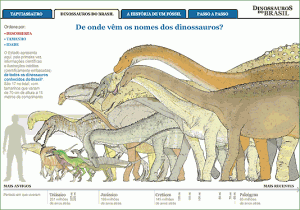April 20th, 2011 — Blog Item Tagged Anita McBride, C-SPAN, distance learning, first lady, video conference
Anita McBride, former chief of staff for first lady Laura Bush, participated in a C-SPAN distance learning video conference on April 14. McBride spoke about her extensive knowledge on many first ladies of American history and took questions from Steve Scully, the political editor for the C-SPAN networks, George Mason University, University of Denver and Purdue University.

Anita McBride
McBride talked about her work with the U.S.-Afghan Women’s Council and other programs like the Middle East Partnership Initiative (MEPI) that help women in those countries involve themselves in the political process or other male-dominated aspects that they’ve been denied from.

MEPI
“No one can imagine the repression and brutality they faced…” McBride said about Afghan women, “They honestly don’t want to be seen as victims…”
I was really happy I asked McBride a question and her answers were very honest. Many people in my class were nervous about asking questions and I was, too. I’m normally not interested in political journalism but this conference has made me want to try it out.
April 12th, 2011 — Blog Item Tagged class visitor, ethics, Mark Stencel, NPR, social media

Mark Stencel
Mark Stencel came to speak to my class:
- Doesn’t use the term new media because he’s been working with it for 16 years
- Gave us an intro on NPR.
- Showed us his blog
- NPR’s national audience on the radio is growing when may other outlets are losing theirs. They’re doing a lot of experimenting with trying to find the right way to tell a story to their audience.
- But their problem is a lack of online audience. They hired a lot of print journalists to do site.
- Social media is one way they are trying to reach out to followers
- Ethics are important to think about now so when you’re confronted with something then you know what to do.
April 6th, 2011 — Blog Item Tagged charticle, infographic, Teaching online journalism, tech blog post
This post was about infographics.
Currently, I am creating one for my Pop Culture Journalism class with a partner from an AVT class. This post was interesting because it showed what a good infographic looks like.
I actually thought the infographic that was posted was a little too busy. But it was visually appealing.

Infographic
Here’s a rough draft of my charticle with the AVT student, Ngan:
Runway/Zoo infographic
March 31st, 2011 — Blog Item Tagged audience interaction, brand, social media, tech blog post, Zombie journalism
Using social media to talk to an audience is what this blog post was all about.

Social media allows brands to interact with consumers.
Mandy Jenkins had some interesting tips.
Here are my thoughts on them:
- Responding — I know you’re always supposed to respond. I hadn’t really thought about direct messaging someone other than getting their contact information. Although this is kind of difficult when doing it just because you’re shy about talking to them because in order to direct message someone, you have to follow them.
- News tips — I knew that after you get a tip from someone you should verify it with them and re-tweeting it afterwards.
- Ask for help — Asking your followers for media about a scene works if you have a large audience. I don’t really have one. Sometimes this has worked for me, especially when it was a current issue like when I was researching DC Fashion Week or GMU football.
- Be thankful — Give credit when credit is due. You can do this on social media sites and within your story or multimedia.
- Questions — It makes sense to respond as quickly as possible since everyone expects instant contact. It’d be polite to tell them if you were finding someone to answer their question.
- Criticism — I didn’t think you should always address it, even to say if you are passing it on but it makes sense. So does not getting into fights and going offline if it goes to far.
- Corrections — I was surprised at how you should correct a factual error in a tweet. Instead of deleting the tweet, you should correct it in a follow-up tweet.
- Start the conversation — Asking questions to your followers sounds a little silly if you feel like you have none but adding a hashtag can help people find it.
- Responses — I didn’t think of re-tweeting a good response with a link with what it’s about it.
March 22nd, 2011 — Blog Item Tagged class visitor, Steve Buttry visual storytelling
Visual storytelling was the focus of Steve Buttry‘s talk. He shared with us his blog, The Buttry Diary.

Steve Buttry
He said he’d use some examples from his blog post from the previous time he talked to Klein’s class. He said he’d also use some new examples.
He started with examples using maps as a gateway for storytelling. He used StarTribune.com’s 13 Seconds in August which was about the 35W bridge collapsed into the Mississippi River. Then he showed Des Moines Register’s Parkersburg tornado map. Both of these stories used maps in order to present the stories, videos and pictures. Lastly, he showed us The Times-Picayune’s Last Chance, which was about Louisiana’s disappearing coastline.
Buttry showed us how satellite photographs were used in The New York Times’ Satellite Photos of Japan, Before and After the Quake and Tsunami to show all of the destruction.
He also showed us President Barack Obama’s Inaugural Address by David Bergman which Gigapan images of the Inaugural address. People can zoom in and see themselves in the picture. The Glastotag idea at The Glastonbury Festival 2010.
He mentioned Storify and using it in a hard news story. Like when TBD’s Dave Jamieson’s “Snow wreaks havoc on D.C., Virginia, Maryland roads” story.
Twitter has helped Buttry “become a better writer” and even helped his ego due to all of the user interaction.
With all the technologies out there, most of us are feeling a little nervous when trying to implement them. This was obvious by most of the questions that were asked. Buttry said it’s good to feel that way and a sign that you should jump on it.
He says to always be curious despite any barriers. Whether they’d be language or fear,
“Ask a question, however difficult it may be,” said Buttry.





